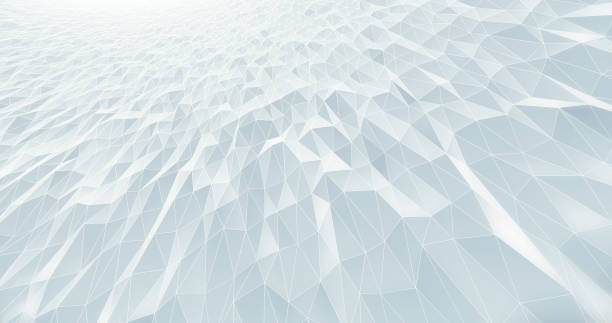Title: The Art of Design: Creating Meaningful Experiences
Introduction:
Design is not just about aesthetics; it is a powerful tool that shapes our world, influences our emotions, and drives innovation. From the buildings we inhabit to the products we use and the digital experiences we engage with, design plays a central role in crafting meaningful and impactful interactions. In this article, we will explore the diverse aspects of design, its significance, and how it can be harnessed to create unforgettable experiences.
Design thinking goes beyond the traditional concept of design. It involves a human-centric, iterative process that aims to understand users' needs deeply. By empathizing with end-users, designers can identify pain points and opportunities, which in turn leads to more thoughtful and user-friendly solutions. The process often involves brainstorming, prototyping, testing, and refining until the final product or service meets users' expectations and desires.
Visual aesthetics play a significant role in design, evoking emotions, and communicating messages without words. Colors, shapes, typography, and layout are all elements that contribute to the overall look and feel of a design. From elegant simplicity to bold and vibrant expressions, designers harness the power of aesthetics to convey meaning and establish brand identities.
UX design focuses on creating seamless and enjoyable experiences for users when they interact with products or services. A well-designed user experience considers the entire journey of the user, from the first touchpoint to the final interaction. By streamlining processes, reducing friction, and ensuring accessibility, UX designers optimize satisfaction and engagement, leading to increased user loyalty and positive word-of-mouth.
Industrial design is concerned with shaping the physical objects we use daily. Balancing aesthetics, ergonomics, and functionality, industrial designers create products that delight and serve their purpose efficiently. Whether it's a minimalist smartphone or a futuristic chair, industrial design shapes the physical world around us, seamlessly blending form and function.
Architecture is the art of designing spaces where we live, work, and play. It goes beyond structural engineering, aiming to create environments that evoke emotions, inspire, and cater to human needs. Great architecture harmonizes with its surroundings, enhances the quality of life, and leaves a lasting impact on the communities it serves.
As our world becomes increasingly digital, digital design has gained paramount importance. This includes designing websites, mobile apps, user interfaces, and virtual experiences. With a focus on intuitive navigation, responsive layouts, and engaging interactions, digital design shapes our digital lives, driving user engagement and loyalty in the virtual realm.
Conclusion:
Design is an ever-evolving and versatile discipline that shapes our world in ways we might not always realize. From the tangible to the digital, design has the power to enhance experiences, evoke emotions, and drive innovation. As technology and society continue to evolve, the art of design will remain a crucial force, creating meaningful connections between people and the world around them. By harnessing the principles of design thinking, embracing aesthetics, and prioritizing user experiences, designers can continue to shape a more beautiful, functional, and meaningful future.
Introduction:
Design is not just about aesthetics; it is a powerful tool that shapes our world, influences our emotions, and drives innovation. From the buildings we inhabit to the products we use and the digital experiences we engage with, design plays a central role in crafting meaningful and impactful interactions. In this article, we will explore the diverse aspects of design, its significance, and how it can be harnessed to create unforgettable experiences.
- Design Thinking: A Holistic Approach
Design thinking goes beyond the traditional concept of design. It involves a human-centric, iterative process that aims to understand users' needs deeply. By empathizing with end-users, designers can identify pain points and opportunities, which in turn leads to more thoughtful and user-friendly solutions. The process often involves brainstorming, prototyping, testing, and refining until the final product or service meets users' expectations and desires.
- Aesthetics: The Visual Language
Visual aesthetics play a significant role in design, evoking emotions, and communicating messages without words. Colors, shapes, typography, and layout are all elements that contribute to the overall look and feel of a design. From elegant simplicity to bold and vibrant expressions, designers harness the power of aesthetics to convey meaning and establish brand identities.
- User Experience (UX) Design: Enhancing Interaction
UX design focuses on creating seamless and enjoyable experiences for users when they interact with products or services. A well-designed user experience considers the entire journey of the user, from the first touchpoint to the final interaction. By streamlining processes, reducing friction, and ensuring accessibility, UX designers optimize satisfaction and engagement, leading to increased user loyalty and positive word-of-mouth.
- Industrial Design: Form and Function in Harmony
Industrial design is concerned with shaping the physical objects we use daily. Balancing aesthetics, ergonomics, and functionality, industrial designers create products that delight and serve their purpose efficiently. Whether it's a minimalist smartphone or a futuristic chair, industrial design shapes the physical world around us, seamlessly blending form and function.
- Architecture: Spaces that Inspire
Architecture is the art of designing spaces where we live, work, and play. It goes beyond structural engineering, aiming to create environments that evoke emotions, inspire, and cater to human needs. Great architecture harmonizes with its surroundings, enhances the quality of life, and leaves a lasting impact on the communities it serves.
- Digital Design: Crafting Interactive Experiences
As our world becomes increasingly digital, digital design has gained paramount importance. This includes designing websites, mobile apps, user interfaces, and virtual experiences. With a focus on intuitive navigation, responsive layouts, and engaging interactions, digital design shapes our digital lives, driving user engagement and loyalty in the virtual realm.
Conclusion:
Design is an ever-evolving and versatile discipline that shapes our world in ways we might not always realize. From the tangible to the digital, design has the power to enhance experiences, evoke emotions, and drive innovation. As technology and society continue to evolve, the art of design will remain a crucial force, creating meaningful connections between people and the world around them. By harnessing the principles of design thinking, embracing aesthetics, and prioritizing user experiences, designers can continue to shape a more beautiful, functional, and meaningful future.




